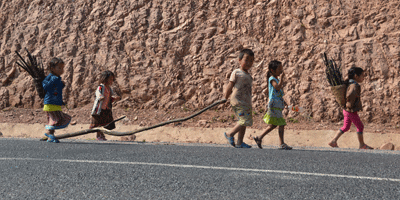Poverty reduction has slowed a little but the government will strive to reduce the number of poor families from 6.56 percent in 2016 down to 6.09 percent by 2017, the government has told the National Assembly.
There are four main reasons for the slower rate of poverty reduction, Minister of Planning and Investment Dr Souphanh Keomixay told the ongoing ordinary session of parliament when he presented a report that concluded the implementation of the socio-economic development plan for 2016 and the plan for 2017.
Explaining the reasons, the minister said the remaining poor families were located in remote hardship areas. Meanwhile, Gross Domestic Product (GDP) registered smaller growth at just 6.9 percent in the 2015-16 fiscal year, a decrease from the 7.5 percent recorded in the 2014-15 fiscal year.
Although the economy has enjoyed high-level growth in recent years, growth has been driven by the high-cost natural resource sector which has created only a small number of jobs so the benefits did not trickle down to the poor.
In addition, families that have just been lifted above the poverty line remain vulnerable to dropping below it again when they are affected by events such as weather extremes.
In this regard, a survey carried out in 2015 showed that Bounneua and Bountay districts of Phongsaly province, which were not previously included in the government’s list of the 72 poorest districts, are now on the list.
In an attempt to alleviate poverty, the government plans to spend more than 1,375 billion kip on poverty reduction programmes, Dr Souphanh told parliament.
The National Assembly is considering approving the government’s proposal to revise the next four-year socio-economic development plan and budget (2017-2020), which seek to lower the annual average economic growth forecast from 7.5 to 7.2 percent. The plans for 2017 are also being considered.
The more than 1,375 billion kip is envisaged to mainly finance poverty reduction programmes in 91 focal locations in 70 districts. The government will focus on stabilising settlements and livelihoods for villagers in targeted focal areas.
Through these programmes, the government aims to raise 5,580 poor families out of poverty by 2017, lowering the number of poor families from 76,318 or 6.56 percent in 2016 to less than 70,924 families or 6.09 percent in 2017.
Another target is for the number of poor villages to be reduced from 1,689 villages in 2016 to not more than 1,511 villages or 17.85 percent in 2017. The government will also strive to increase the number of developed villages from the current 3,836 to 3,914 villages, or 46.54 percent of the total. It is planned to develop and upgrade larger villages into two small towns in each province.
Over the past year, the government has placed great importance on poverty reduction. A number of programmes have been carried out to improve and develop infrastructure such as schools, dispensaries, clean water supply systems, rural roads, small-scale irrigation systems, and electricity networks.
The number of poor families fell from 83,856 in 2015 to 76,318 in 2016, representing 6.56 percent of the total, but failed to meet the target of 6.11 percent as approved by the National Assembly.
Source: Vientiane Times



